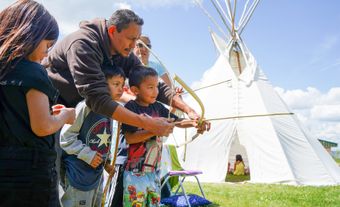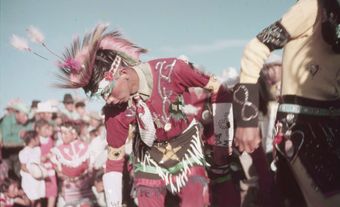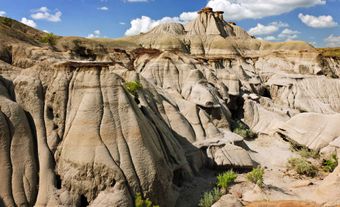Claresholm, Alberta, incorporated as a town in 1905, population 3,780 (2016 census), 3,758 (2011 census). The town of Claresholm is located approximately 65 km northwest of Lethbridge. The name of the town was chosen by John Niblick, a superintendent of the Canadian Pacific Railway, in honour of his wife.
Indigenous Peoples and Treaties
Claresholm is located on the traditional territory of the Siksikaitsitapi (Blackfoot Confederacy), Stoney-Nakoda and Tsuut’ina. It is covered by Treaty 7, signed in 1877. Today, several reserves created by Treaty 7 are located near Claresholm. The Piikani Nation, for example, is about a 30 minute drive to the south, and the Kainai Nation is just east of that. (See also Reserves in Alberta.)
Settlement
The Canadian Pacific Railway reached what would become the town site of Claresholm in 1891. Initially only a stopping place for trains, in 1902 pioneer O.J. Amundsen had a town site surveyed and then brought in 25 settlers from Devils Lake, North Dakota. The community grew quickly and was incorporated first as a village in 1903 and then as a town in 1905. Claresholm’s incorporation as a town was the last official act of the territorial government before Alberta and Saskatchewan became provinces (see also North-West Territories 1870-1905).
Development
During the Second World War Claresholm was chosen as the site for the No. 15 Service Training Flying School. It served as one of Alberta’s most important British Commonwealth Air Training Plan bases. Later the Claresholm Airfield was also used to train NATO pilots. Today, Claresholm acts as a service, administrative and retirement centre for the surrounding agricultural community.

 Share on Facebook
Share on Facebook Share on X
Share on X Share by Email
Share by Email Share on Google Classroom
Share on Google Classroom


